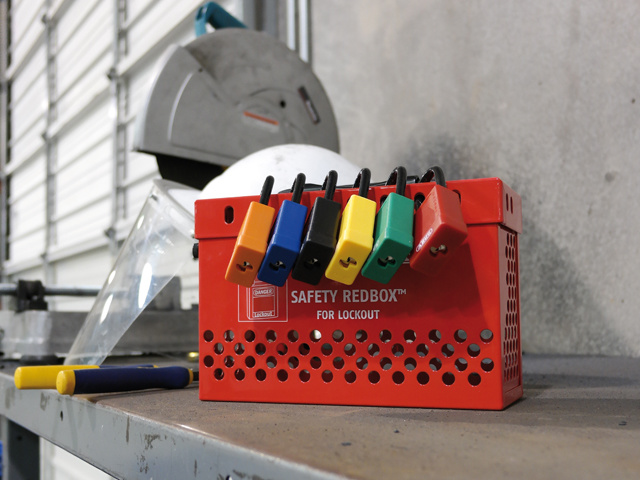Staying Safe in Numbers: The Power of a Group Lockout
- Posted on
- 0

What is a group lockout?
A group lockout is a crucial safety procedure used in workplaces where multiple employees work on the same machinery or equipment. It is the perfect safety solution when there are several energy sources that need to be de-energized before maintenance or servicing.
When performing a group lockout, an authorized employee is responsible for coordinating the lockout process. The authorized employee ensures that all energy sources are identified, de-energized, and locked out, and that each employee has applied their safety padlock to the group lockout device. The lead person is also responsible for removing the group lockout device after the maintenance or servicing is completed.
A group lockout is a critical safety procedure that requires careful planning and execution to ensure the safety of all workers involved. It is essential to have clear communication between the lead person and individual employees to avoid confusion and ensure that everyone understands their role in the process. It is important that all workers involved in the group lockout process are properly trained in LOTO procedures and have a thorough understanding of the hazards associated with the machinery or equipment they are working on.
When do you use a group lockout?
Make sure it is clear in the LOTO procedure when group lockout should be applied, for example:
- A group-lockout is applied only when the number of energy sources to be locked out is greater than x.
- A group-lockout is only applied when the number of employees involved including contractors is greater than x.
How does a group-lockout work?
A group lockout process involves several steps that need to be carefully executed to ensure the safety of all employees involved. The following are the key steps in performing a group lockout:
1. Preparation: The authorized employee, who is responsible for coordinating the group lockout process, should identify all energy sources associated with the machinery. This includes electrical, mechanical, hydraulic, and pneumatic sources. The authorized employee should also inform every employee that is going to be involved in the group lockout process and provide them with the necessary training and instructions.
2. Notification: The authorized employee should notify all employees that are going to participate in the group lockout process. This notification should be given well in advance to ensure that every employee has sufficient time to prepare.
3. Shutdown: All energy sources associated with the machinery or equipment should be shut down by the authorized employee, who should then verify that the machinery or equipment is in a safe state and cannot be accidentally restarted.
4. Isolation: The authorized employee should isolate all energy sources by opening the connected circuit breakers, valves, or other isolation devices. Always ensure that any residual energy is dissipated before proceeding with the group lockout process.
5. Group lockout: The authorized employee should install a group lockout device, like a lockout hasp, on the energy isolation point. The hasp allows multiple employees to apply their individual safety padlocks to the same device, ensuring that the machinery or equipment cannot be restarted until all the safety padlocks are removed.
6. Safety padlock application: Each employee involved in the group lockout process needs to apply their personal safety padlock to the hasp. This ensures that they are the only ones who can remove their padlock, and that they have exclusive control over the machinery or equipment they are working on.
7. Verification: The authorized employee has to verify that all energy sources have been isolated, and that all padlocks have been applied to the group lockout device. This verification ensures that everyone involved in the group lockout process understands their responsibilities and that the machinery or equipment is safe to work on.
8. Work completion: Once the maintenance or servicing is complete, the authorized employee can let everyone remove their safety padlocks and remove the group lockout device. Before energizing the machinery or equipment there need to be verified that every employee had removed his or her safety padlock.



















Comments
Be the first to comment...